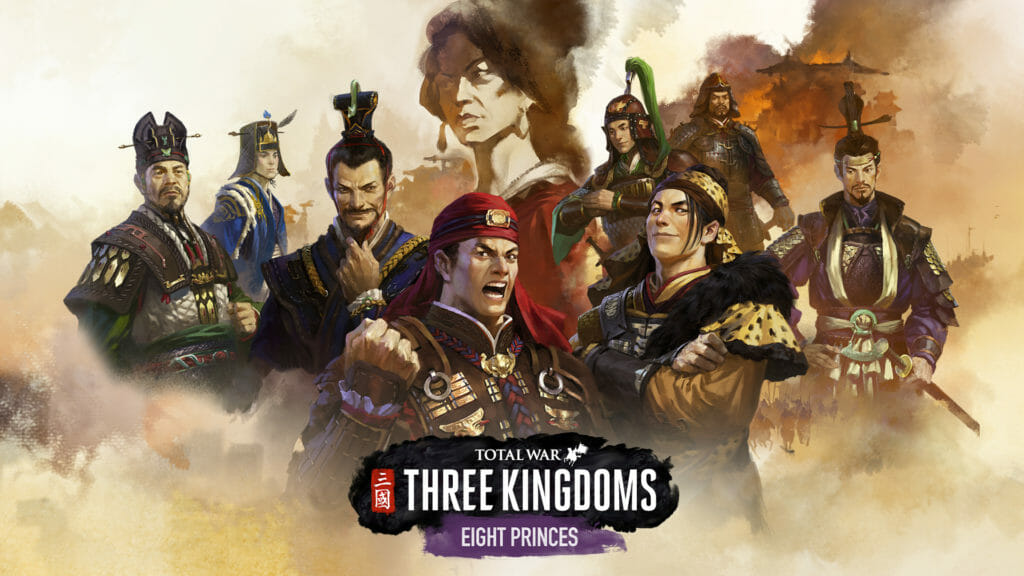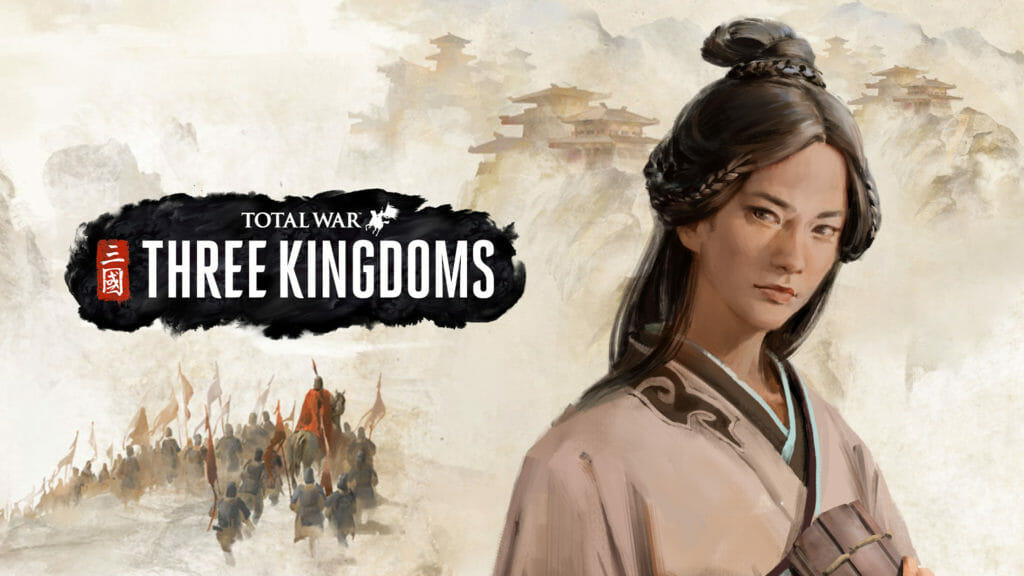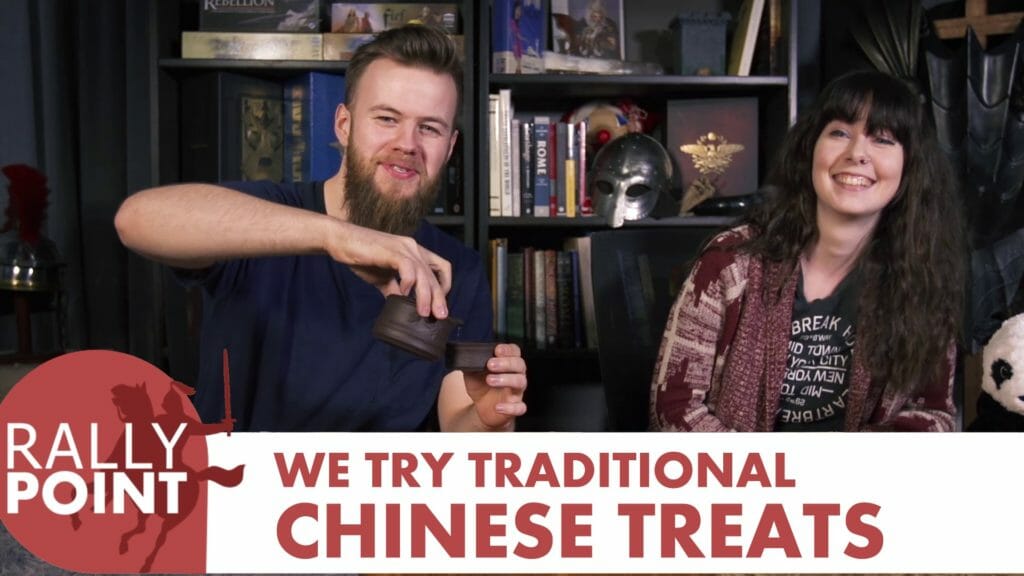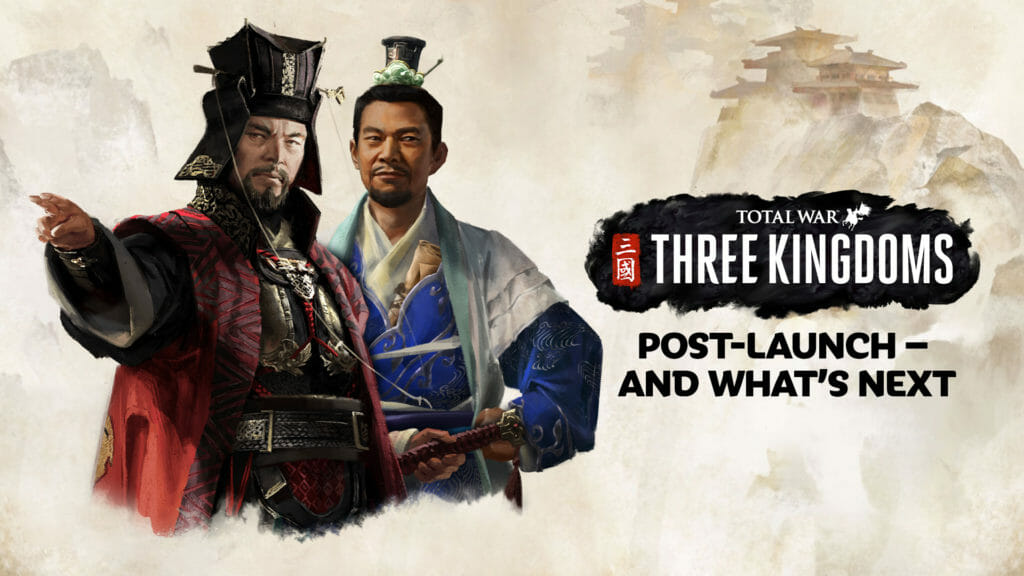Designing Dong Zhuo: How to Make a Total War: THREE KINGDOMS Character
Making a character for Total War: THREE KINGDOMS is far from a simple process. With lots of different people working together across multiple different departments, a single character has to go through numerous stages of design before they are considered ready to go forth and unite – or conquer – China.
Join us as we chat to some of the people involved in the Total War: THREE KINGDOMS character design process, paying particular attention to the quirks of everyone’s favourite tyrant Dong Zhuo.
Research and initial design – Attila Mohacsi and Leif Walter
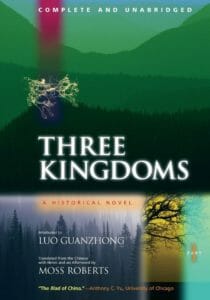

The first step was of course to research the vast cast of characters during the Three Kingdoms period. For this, we focused on three major pillars of research:
- Historical sources, most notably Rafe de Crespigny’s A Biographical Dictionary of Later Han to the Three Kingdoms
- Selected biographies of important characters such as Cao Cao or Sun Jian and of course the novel itself (Three Kingdoms: A Historical Novel by Luo Guanzhong and translated by Moss Roberts)
- As a third angle, we wanted to understand the cultural significance and legacy of characters from a modern perspective. How are they portrayed by modern TV shows or games? How is contemporary drama and theatre representing these characters?
Many of the famous characters still have huge cultural significance in Asia today, so getting this modern viewpoint right was particularly important.
These three pillars together allowed us to understand these characters from multiple angles and to represent them adequately. After processing all of this research – and making sure we represented the most important members of the cast – we settled on 32 characters. But as the fierce battle regarding who to include raged on – and the team really wanted to add more – we ended up with around 40.
From the list we had, the designers went through each and every one of them and started to build up which aspects of their personalities we would like to emphasise and, very importantly, how they fit into the Wu Xing. Throughout the development process we worked to ensure that these 40 most prominent historical characters were properly represented in the game via appropriate traits and gameplay effects that matched their own unique personalities and ambitions.
Alongside this we also started to gather references for them, and when all of this was done we were ready to start concepting our characters.
In the case of Dong Zhuo specifically, researching him was not straightforward.
He is of course portrayed as a cruel and heartless tyrant who relishes the thought of boiling people to death. This was certainly something we wanted to get across, but there was also another side to Dong Zhuo: he did not see himself as a tyrant, as the “evil” ruler. He simply thought that his own (cruel) methods were appropriate when required to keep the empire under control and to retain his power. His reaction to this time of crisis was to rule with an iron fist, to rule through intimidation – and understanding this flip side of his character was important to get his gameplay right as well (but more on this later).
Concept art – Lulu Zhang
As a concept artist, firstly I checked out the brief for Dong Zhuo in the design document provided by the designers, as well as his background story from Romance of the Three Kingdoms. From this, I try to figure out his personality, his overall colour palette, his physical silhouette, the amount of armour he wears, etc.

I then collected references from lots of different resources (such as games, books, TV shows, cartoons, and movies, as well as a lot of ancient Chinese armour references), put all these references together, and had a meeting with the designers and art director. This short meeting filters out elements that are not suitable for Total War: THREE KINGDOMS and identifies the ones that do fit our art direction.
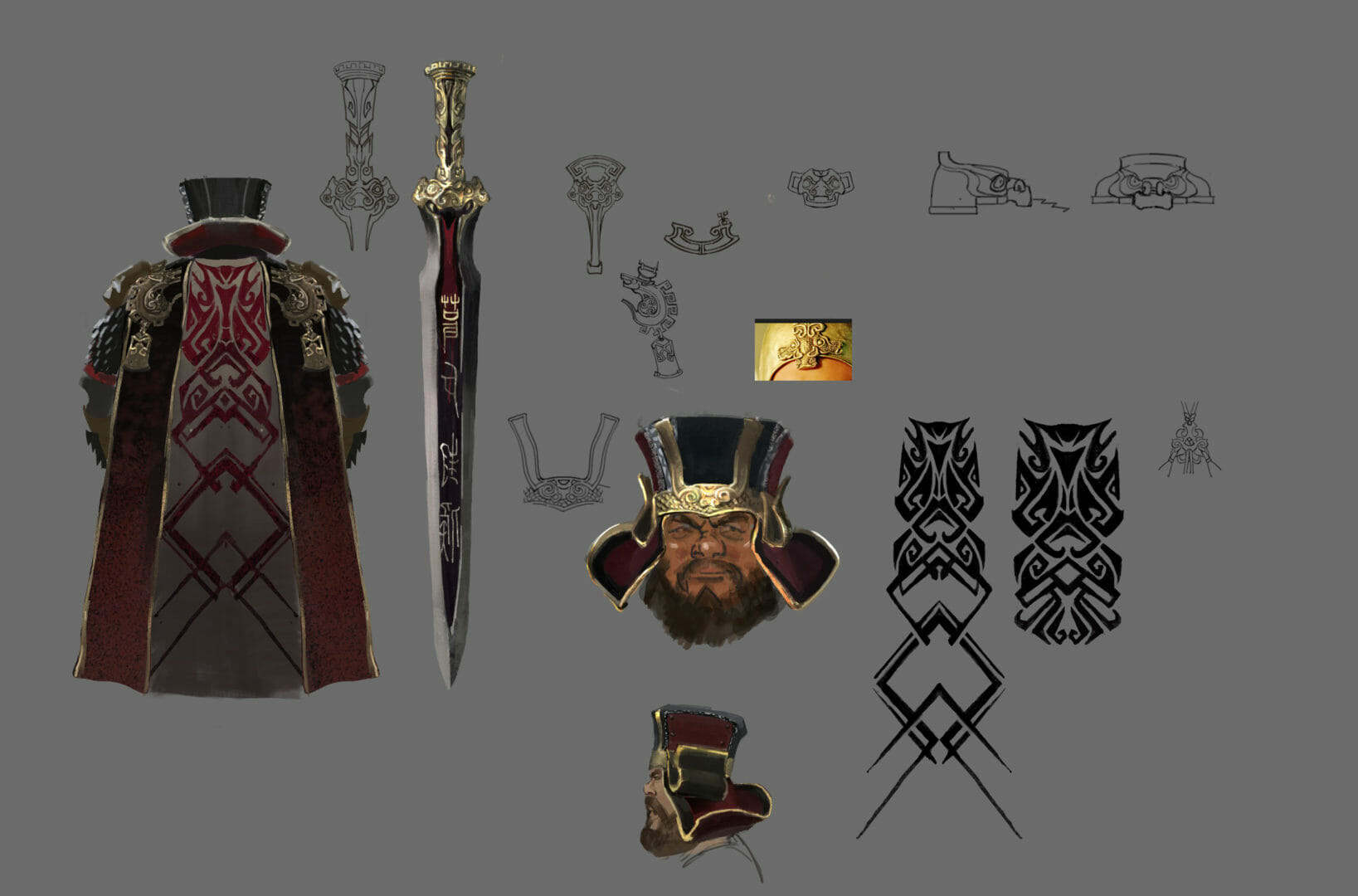
After the meeting, I started to block out the initial sketch of Dong Zhuo, drawing inspiration from the key words I put down during my earlier research. There are multiple rounds of meetings during the concepting process, and during these I tweaked Dong Zhuo’s concept accordingly. Dong Zhuo was designed and rendered at the same time, both in order to give the 3D artist a better understanding of the materials used in his model and also so the finished concept art can be used as the in-game illustration.
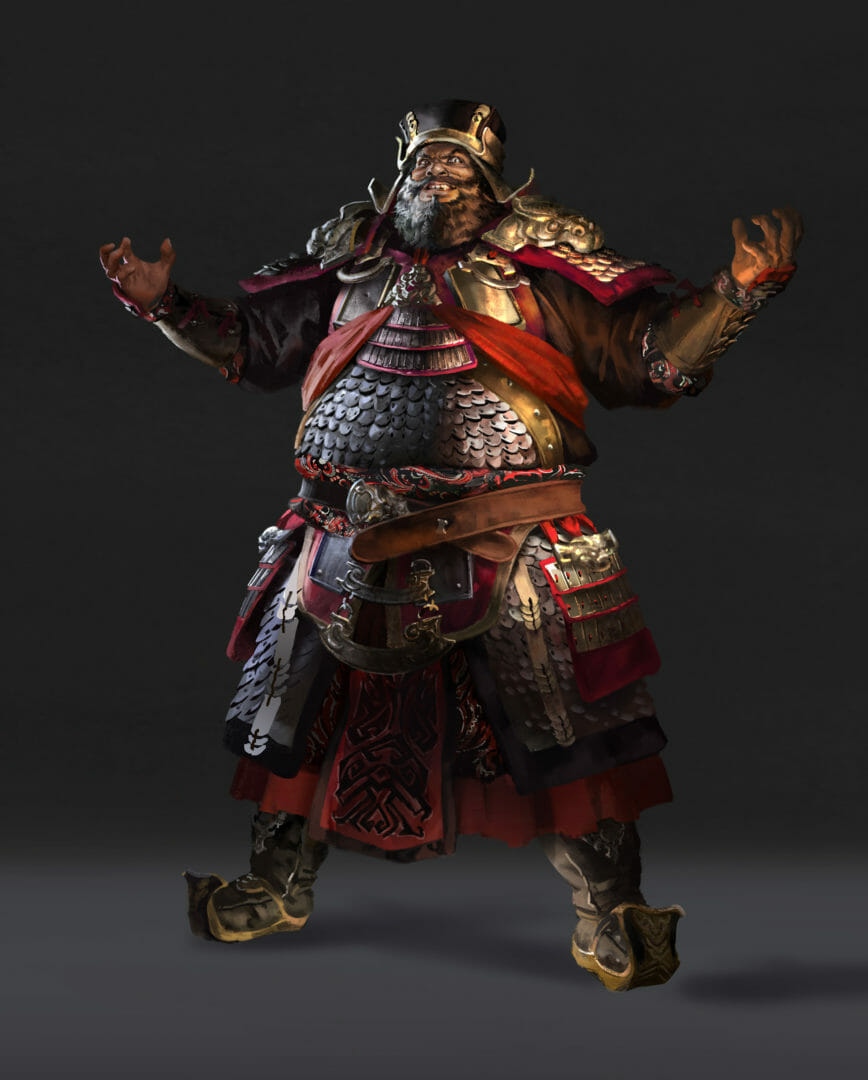
When Dong Zhuo’s design was done and approved, I added three side views, the 2D texture of the patterns on his clothes, some photo references, and his exclusive weapon concept, and then handed it over to 3D artist. After the 3D model was done, I tweaked his face in the 2D illustration to make it better match the 3D model’s face and finally handed it over to UI artist for exporting and making into various templates.
If you want to find out more about the artistic design process of characters in Total War: THREE KINGDOMS, check out this article on character design in Eight Princes!
Character art – Mauro Bonelli
The 3D character art for Dong Zhuo proved to be one of the most challenging due to his size.
We tend to use one rig that fits all the characters we need to create as this has the advantage of saving memory and thus improving performance. However, with this advantage comes a limitation for a character such as Dong Zhuo: not all of the bones in the rig – which allow it to be animated – are necessarily located in the right position for such a big character. As a result, we decided to start creating different proxy rigs with incremental size differences to test their limits and see how much we could push them without them noticeably breaking into deformation.
Once we were happy with the size of the whole body, silhouette, and where all the moving parts were placed, we proceeded to create the high poly meshes using ZBrush, and after applying these to the final proxy we tested it and it was approved.

Everything for Dong Zhuo was created exclusively for him. Platige collaborated with us on the sculpt as it was going to be used in the launch trailer they created for us. In the case of most other characters, we could refer to a library of parts for things like metal scales or lamellar, but in Dong Zhuo’s case we had everything concepted as unique.
During the sculpting process, we check the proportions of different parts and how they work together. In some cases, we might move certain parts of the armour slightly or scale them up or down to get a better visual result without compromising the limitations of the proxy. We then moved on to sculpting the face using the references that the concept artist had provided (including beard images in Dong Zhuo’s case). Once the sculpt was finished and approved we created the low polygon model in 3D Studio Max, which becomes the mesh used in game.
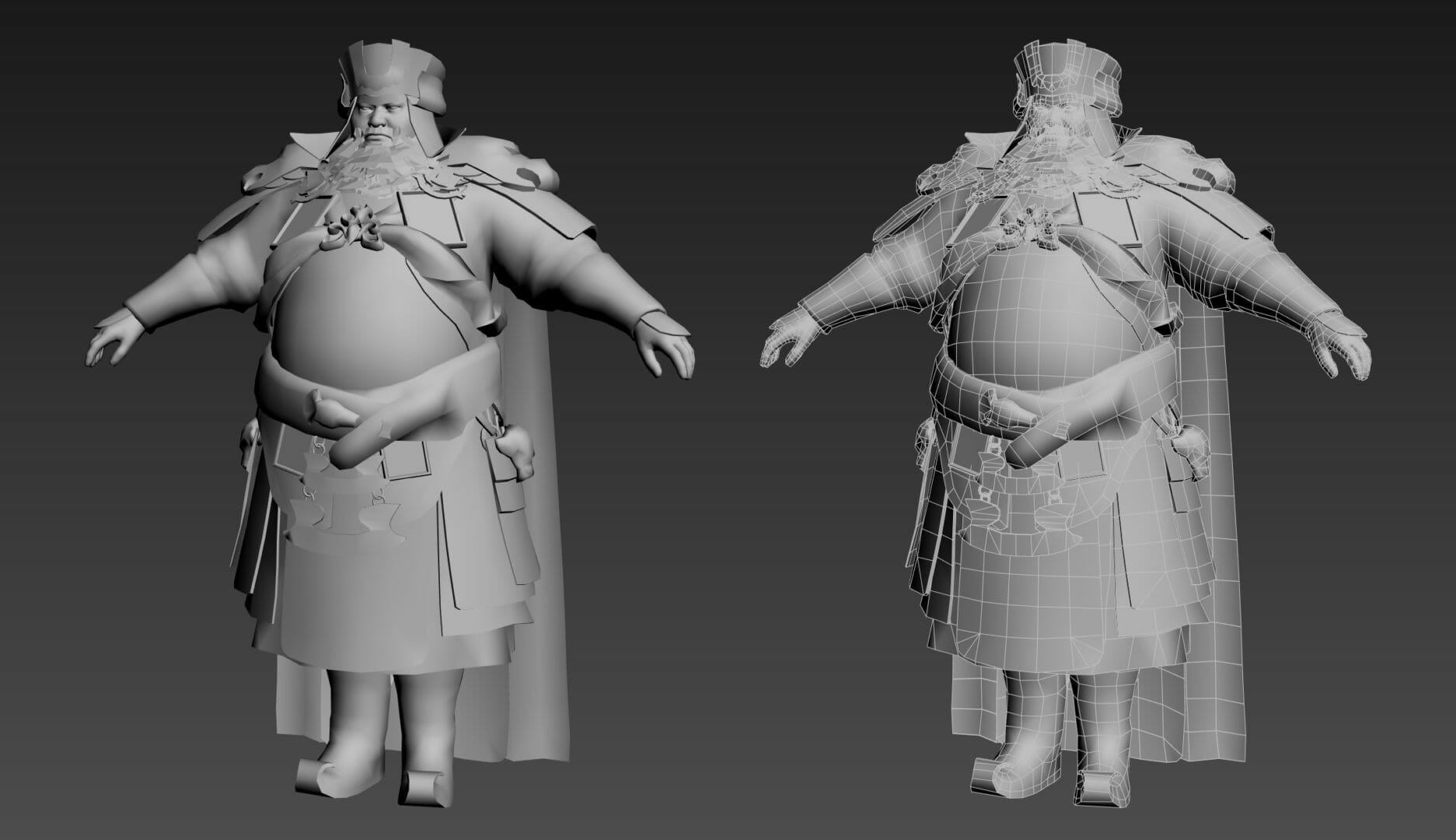
The game mesh needs a certain attention to detail because all the places where the mesh will deform – which correspond to where joints would be in a human body in most cases – require extra edges built in a specific way to get the best results.
We then decide the final texture resolution for each character based on texel density, which is influenced by the distance between the camera and the characters: the closer the camera, the higher resolution the textures should be. We do all this in preparation for making the UVs.
UVs are flat versions of the 3D model – similar to the way a map of the Earth is a flat version of a globe – and we lay them out in a way that avoids as much distortion as possible.

Once this has been done, we move on to texturing by “baking” all the details from the sculpt made in ZBrush into the textures of the game model using Marmoset Toolbag. After this, we move on to textures using Substance Painter, with which we apply the library of materials made for the THREE KINGDOMS project that give the impression of things like leathers, fabrics, and metals.
Once texturing is completed, we hook up all the materials, prepare the scene, and pass it on to the riggers, who will add the rigs and export it into the game.
Gameplay function – Attila Mohacsi and Leif Walter
For non-faction leader characters, we started where we left off at their descriptions. We worked to tie all of our gameplay elements in with the Wu Xing though unique units, abilities, and equipment, building their gameplay style to match their profile.

At the same time, we also started figuring out who would be the playable characters in Total War: THREE KINGDOMS. Our original goal was to have eight of them, but following numerous discussions we settled on twelve.
We then started to work on the gameplay around them. The gameplay of some characters, like Cao Cao, was settled really quickly, but other important characters like Liu Bei took quite a while. I would say the key moment for the more difficult ones was when our game director Janos Gaspar told us that we should approach it from a different angle. If Liu Bei is meant to be good at dealing with people, we shouldn’t just add bonuses but also give a reward if you act as and embody Liu Bei by making your other characters happy. Embodiment was key: ideally we wanted players to think and act like the historical character they were playing as, be confronted with the same challenges, and then – perhaps unknowingly – come up with similar solutions.
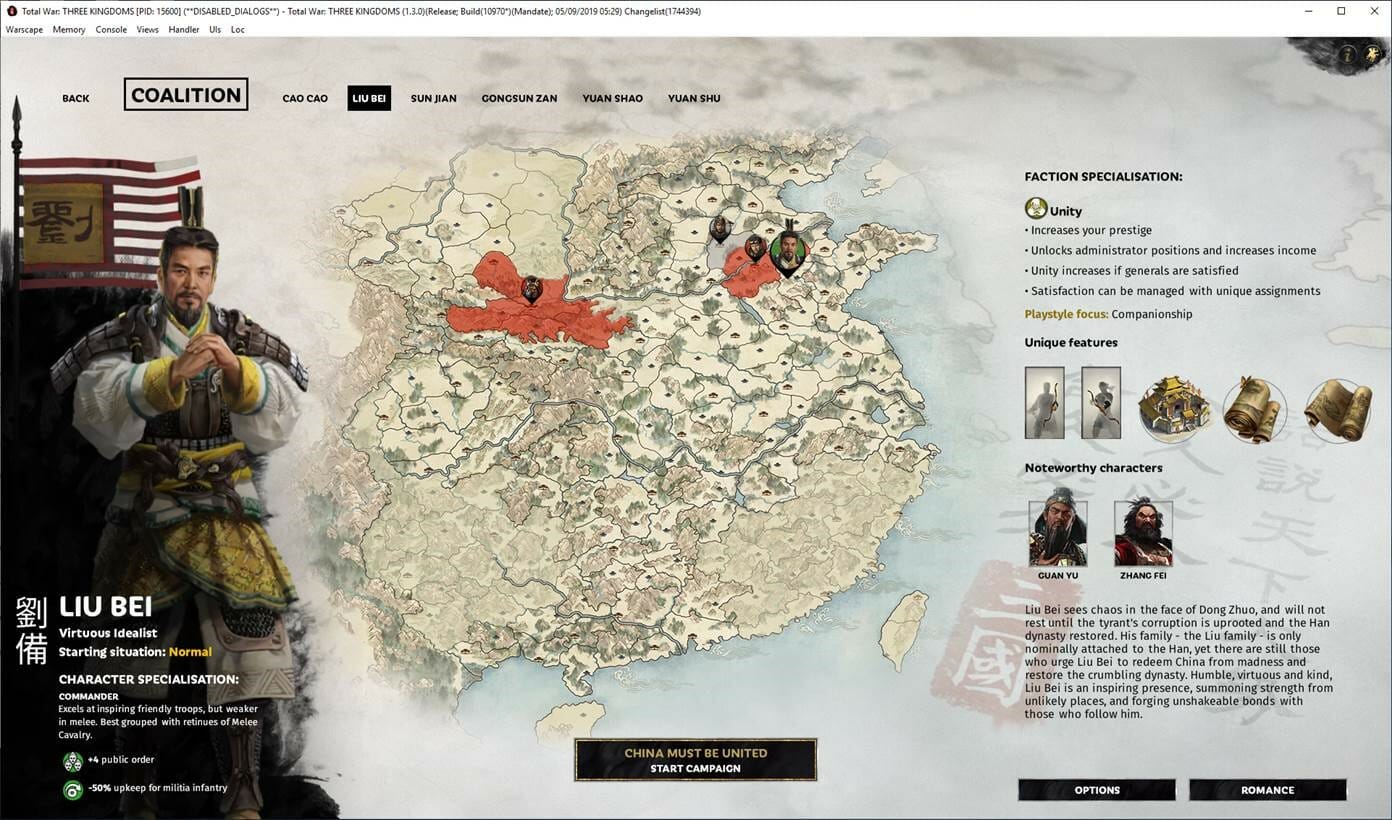
Dong Zhuo is an excellent example of this, where players aren’t supposed to just “be better at razing or executing”. The empire is unstable, the realm is in chaos, and how do you – as the player – keep the situation in control? You have the tools at your disposal to rule through intimidation. You do not have to use them, but it’s easy to see that these can indeed be strong tools to keep a crumbling empire together. Many players will find themselves on the slippery slope into tyranny as a result, especially if you want to abuse your power as prime minister of the empire who can coerce people into diplomatic deals – then you’ll need to keep your aura of intimidation intact.
It took countless play and feedback sessions where both the designers and QA played the game to making sure the player experience was right and the characters’ personalities were being portrayed correctly.
Animation – Juan Cervilla and Will Hallsworth
Animation generally starts with a kick-off meeting with the art director, battle design team, and tech animators.
We discuss how to approach the character, their personality, the type of unit, and the style of animations we want to achieve. From a technical side, we look at the clothing, armour type, weapons, and discuss any potential issues we might have when we start animating.
From here, we decide what animations are needed for the character. This can include a variety of animations from unique stances, emotes, locomotion, special abilities, and combat.
After planning the animation requirements, we start with the rigged character model and create the character’s initial base pose. This begins with the reference poses provided by the concept art team and is followed by experimenting with different types of strong silhouette and nice lines of actions. We always take into consideration that we are making a Total War game, and as such these poses have to be readable from a distance.

We then try out animation ideas, performing them ourselves and recording this for reference to find the style that fits the character’s personality.
When ready, we organise a motion capture shoot at our own internal motion capture facility. Depending on the complexity of the actions needed, we will use either external performers or in-house animators. We always try to have at least two animators involved in the motion capture shoot as we know what works in game and what doesn’t. This way, we avoid reshoots or problematic animations later on in development.
The raw motion capture data is processed and returned to us on our character rig ready to modify by pushing poses, adjusting timings, and generally refining character shapes.
The animations are then implemented into our engine via our in-house tools, where they are reviewed, tested, and reworked if necessary before being signed off.
Animation effects – Zoltan Molnar
Although Dong Zhuo is a very unique character, we couldn’t give him special treatment as no skill or ability effect is linked exclusively to one character. All skill and melee weapon trails effects are shared among them, including arrow trails which, aside from a few exceptions, are common to every character.
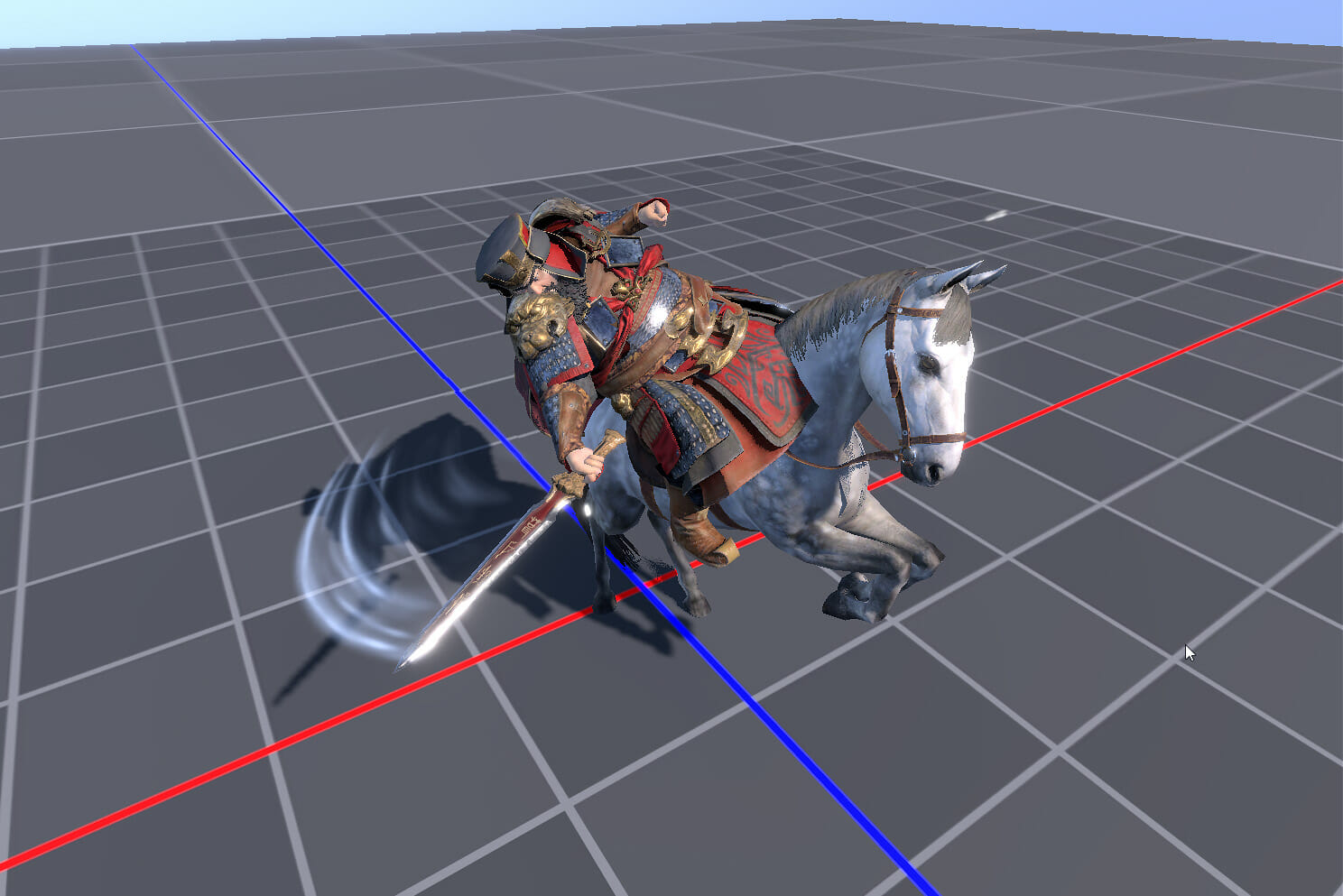
The difficulty of the task was finding a delicate balance between being realistic and having easily readable UI feedback. Here our art direction diverged a little from the previous Total War games (especially WARHAMMER), and we aimed for a strong, realistic base with a pinch of “magic”.
On top of that, we had to make sure the visual effects matched the continuously evolving inky shader components of the 3D UI, which were managed by the technical artists.
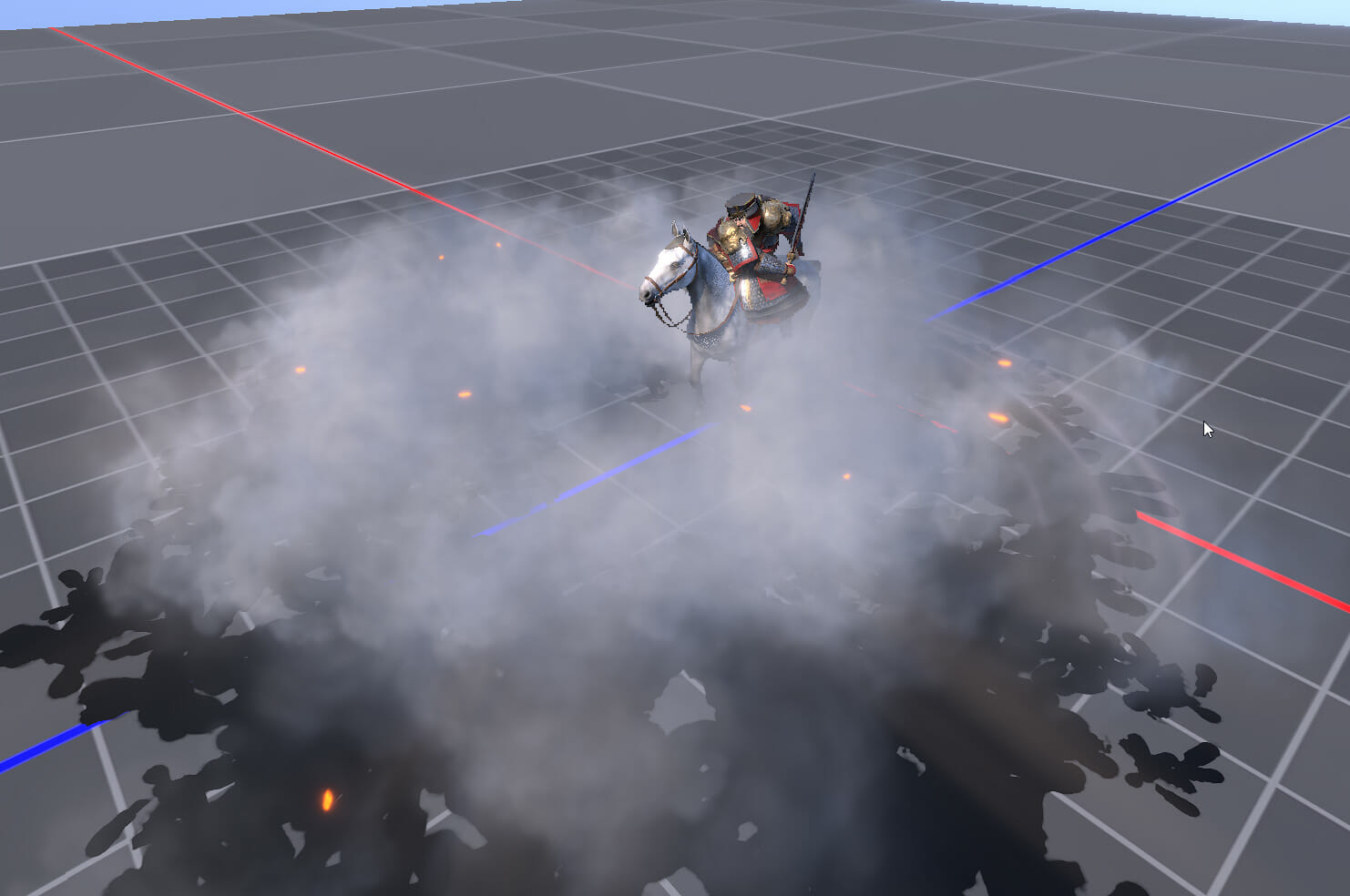
To achieve this goal, we went through a lot of iterations and occasionally even had to remove otherwise finished visual effects in order to maintain consistency. However, the different game modes – Records and Romance – mean that there are different levels of visual effect realism to suit everyone’s tastes.
Writing – Pete Stewart
Writing Dong Zhuo begins with research, and lots of it. We pore over the primary and secondary sources (as mentioned by Leif and Attila) as well as our own research into the subject. Helping to define who the character is and what they represent in the game involves us collaborating both with the designers and the audio department. Talking with design helps us understand what the character will play like, while talking with audio helps us to understand what kind of voice should represent them.
Dong Zhuo, as we all know, is a cruel and tempestuous tyrant, and so his gameplay is designed around destruction and tyranny. His written lines, therefore, all bear out that anger and that malice, with a determined but also slightly gleeful air. We also know that Dong Zhuo was somewhat vengeful, as he was cast aside by the Han. In many ways, this is his revenge story, and so much of his written content leans into that idea: full of rage and anger and taking glee in horror, but believing it is all for the right reasons.

Consulting the glut of Three Kingdoms media is of course extremely helpful in establishing a baseline for how people already perceive this character, and how we should depict him, yet we also look to more contemporary renderings of similar characters to try and find other ways to get across who he is. Peppering a script with touchstones and oblique quasi-references helps players to realise a character and make their actions more understandable, if not palatable.
While the entirety of a character is fairly nuanced and varied in places, we try to distil their essence into the opening speech of their first battle. To get the sense of a character, and their central conceit, that’s the place to find it.
There is a lot of cross-design and collaboration between departments before pen even gets put to proverbial paper.
Find out more about writing Total War: THREE KINGDOMS by reading this interview with Total War writers Pete Stewart and Dion Lay!
Audio – Nick Gratwick
To create the voice for each character, we begin by researching and creating biographies detailing their backstory and motivation, then we take a look at their concept art to give us an idea of their visual direction. We also discuss and create the dialogue system for the game working alongside the game designers to support game features with dialogue. Understanding and reviewing existing portrayals of a character in television, film, and games also helps us to get a feel of audience expectations.

Dong Zhuo specifically is a larger-than-life character, and so when we started our actor search we were keen to represent his size and personality. After searching for the best actors we auditioned them in our studios at the Creative Assembly office, directing them to fit the brief (Dong Zhuo, for example, required an actor with a full and deep voice).
A small committee cast each character, choosing from two to three options. The script is then written and proofed, and after that recordings commence. Each individual character actor in Total War: THREE KINGDOMS required over 15 hours of recording, direction, and engineering in house over several weeks before implementing and balancing it all in the game using Wwise.
QA – Ben Wood
People often think QA is simple but it can be a very complex and detailed process, especially in a AAA sandbox game like Total War: THREE KINGDOMS.
Our aim is to test any feature or content produced during each step of the development process that makes it into the final build players receive. Our main goal is to find any bugs and issues with what has been implemented and then communicate them to the team so they can be addressed. We aim to check various aspects of the content, such as functionality, quality, visuals, audio, performance, and so on.
Our first step is to understand the design. To do this, we primarily consult with the design owner but we may also seek out concept art to give us some comparison or set a vision for the visual direction.
We then start to create a test plan which covers the various elements we need to check, ensuring that the content is working as intended and meets our quality standards.

Before alpha, we aim to test as much of the content as possible as is it produced and implemented.
This normally consists of:
- Art-based reviews including animation, rigging, and skinning
- Basic gameplay support, for example can I select and use the content in the game builds?
- Does a feature have unique representative placeholder content like text or UI art? These can be replaced as the development process progresses
When we get to alpha, we double-check everything we have previously tested during the pre-alpha testing period to ensure that the content produced meets our alpha milestone criteria. We use our test plans to help record and structure these tests.
Post alpha up to release, we regularly run our test plans for the content to ensure that it still meets expectations as well as try to break it in creative ways. We do this often as the regular updates and changes made to the game during development can cause unforeseen issues, and it’s important to regularly check whether content has been affected by recent changes.
Just before release, we give the build one final review to make sure that it’s ready for release. The build is then locked, and no further changes can be made to ensure that we protect it from any last-minute changes that could break it.
To find out more about the QA process in Total War: THREE KINGDOMS, check out this article!
UI (art) – Hennadii Omelchenko and Pete Vernon
From the art side of UI things, once the concept artists have finalised the character illustrations and set up the Photoshop files ready for exporting, they pass them on to us.
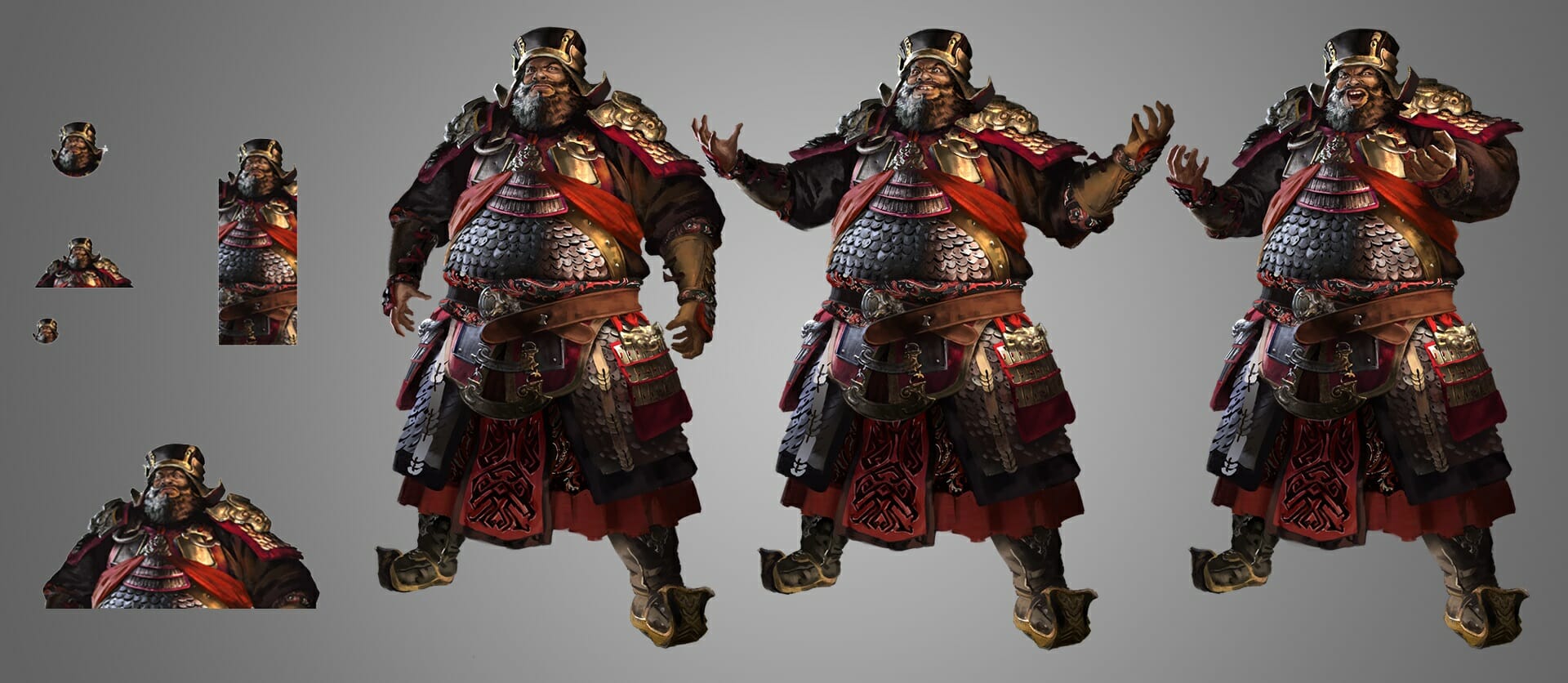
As with all of our characters, we have to export eight versions of them, and three of these versions are exported in three different poses. This is because characters are represented in so many different areas of the Total War: THREE KINGDOMS UI, from the full body characters that a player sees in the main menus of the game to the unit cards they see in battle.

Once the characters are exported, we set up a template UI layout for each version of the character illustrations. Some of our layouts require specific fine tuning as we use the character portraits in different ways, so we make these individual changes to ensure the characters look good in all our layouts. We then pass this work over to be used by UI programmers and designers.
UI (code) – Andreas Sfakianakis
On the UI side, we have to find a way to support all these different characters in an interesting and dynamic way.
This means that if you change characters’ armour, you can see it in their details panel, or if they have low satisfaction or are pleased about a diplomatic action they change their pose and facial expression accordingly.

One thing not everyone may have noticed is that some characters, like Xiahou Dun and Lü Bu, have different art in Romance and Records mode in order to make them more historically accurate.
To achieve this, we created a pipeline where the concept artist can export characters’ art to multiple layers which they could then preview live in the game as required. Then, depending on conditions like their equipment, satisfaction level, or the game mode, we can compose appropriate depictions of these characters from the multiple images and layers available.
Perhaps my favourite UI detail in the game is that Xiahou Dun’s unit card and 2D depiction gets an eye patch after the event that causes him to lose his eye.
Meet Dong Zhuo!
Once a new character has properly taken shape, it’s time to announce them.
This usually takes the form of a blog post and a place on our warlord hub website, as well as a poster released via all our social media platforms – here’s how we first revealed Dong Zhuo to the world:
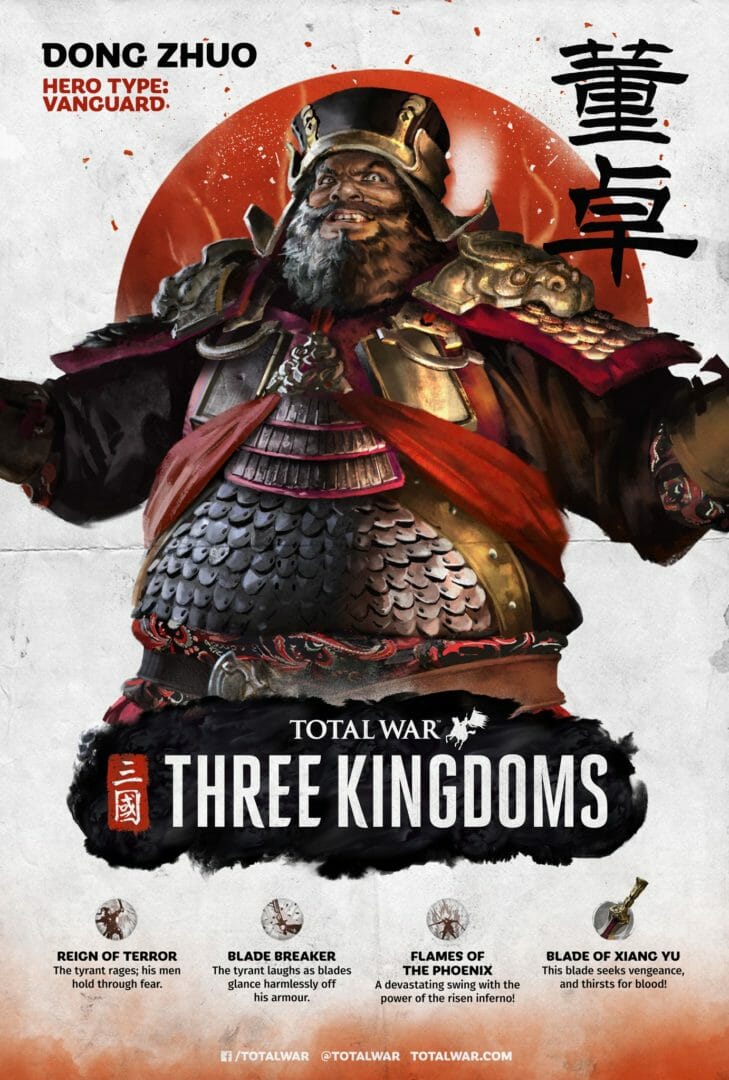
And there we have it – a bouncing baby Dong Zhuo is born!
Stayed tuned for more behind-the-scenes peeks at the development process of both THREE KINGDOMS and our other Total War titles!



